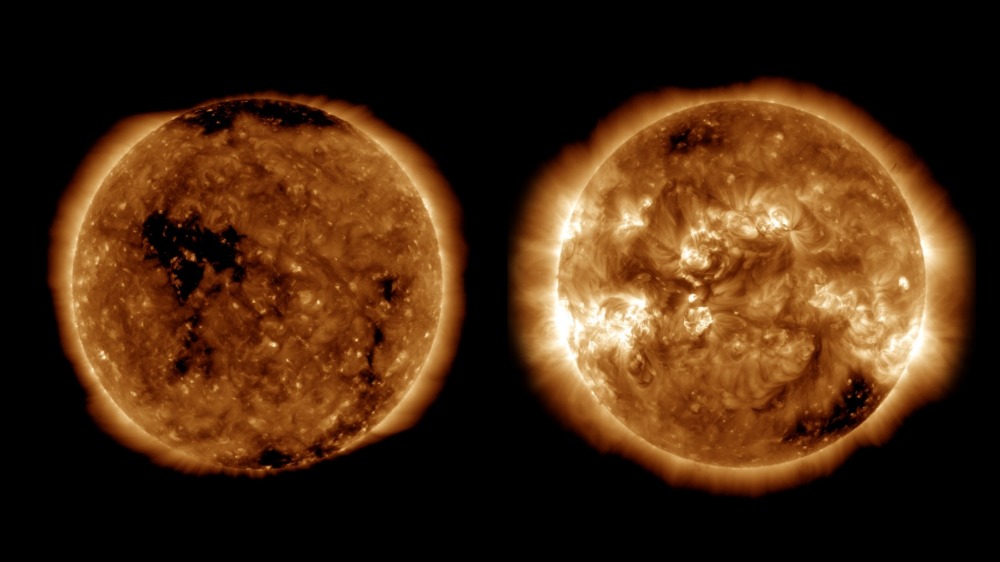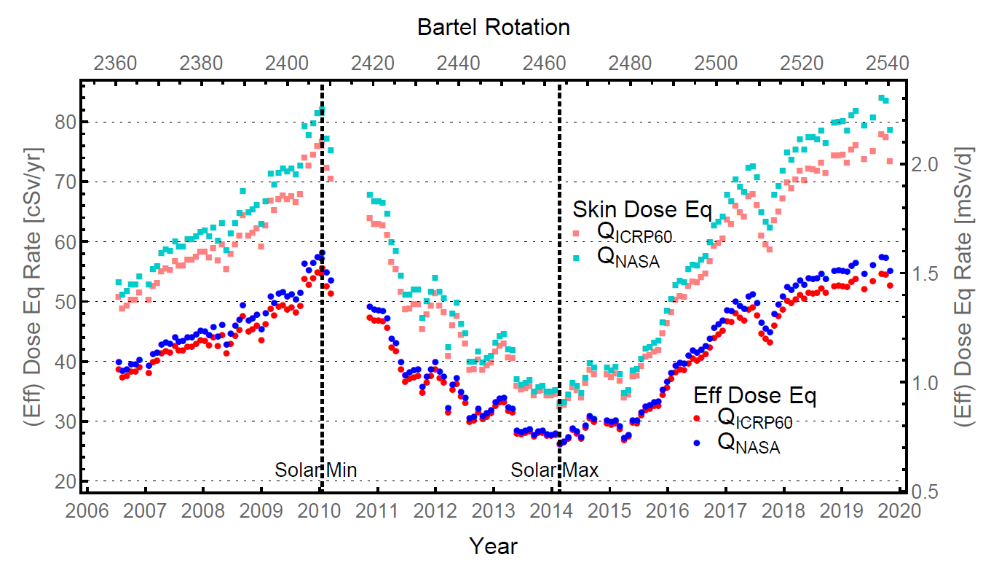Cosmic Ray Solar Modulation
Release date: 2025-05-16
Visits: 670
Source: 山东高等技术研究院
Cosmic Ray Solar Modulation
When cosmic rays enter the solar system, their intensity, direction, composition, and energy spectrum will change due to the influences of the solar wind, the Sun, the interplanetary magnetic field and solar activity. This phenomenon is known as the cosmic ray solar modulation effect. It is primarily manifested in the heliospheric propagation, spatial gradients, heliospheric anisotropy, long-term solar modulation and short-term modulation of cosmic rays. While cosmic rays are modulated by the Sun, the fine temporal variations in their energy spectra also encode traces of solar activity.

Based on the precise temporal structure measurements of the proton, helium and positron/electron fluxes obtained by the AMS experiment, the solar physics team has analyzed the interplanetary driving sources responsible for the 11-year long-term cycle and short-term variations, such as the 27-day and 1-week cycles of galactic cosmic rays. Leveraging the understanding of the data analysis team in AMS results and building on a deep understanding of the physical mechanisms related to solar activity, the team has developed numerical models for both the long-term and short-term solar modulation of galactic cosmic rays. By comparing the physical mechanisms behind cosmic ray variation across different timescales, the team has uncovered their common characteristics and intrinsic connections. Additionally, they have clarified the temporal relationships among various interplanetary driving sources and established a precise time-varying model that couples the long-term and short-term variations of cosmic rays.

These findings have been published in the journals such as the Astrophysical Journal and Physical Review D. Based on this research, the team applied for and received funding from the National Natural Science Foundation of China's Joint Fund Key Support Project, titled "Study of Solar Modulation of Galactic Cosmic Rays on Different Timescales Based on the AMS-02 Experiment." The team has also established collaborations with relevant research groups, including the Center for Space Science and Applied Research of the Chinese Academy of Sciences, University of Kiel in Germany, Florida Institute of Technology in the United States, and the Russian Academy of Sciences.

Space Particle Radiation Forecasting System
The deep space environment is filled with a significant amount of charged cosmic rays, which are a critical factor affecting the safety of astronauts and the operation of deep space exploration facilities. Among these cosmic rays, galactic cosmic rays are high-energy charged particles originating from outside the solar system. Due to their high energy and large charge, they pose more severe impacts and are more challenging to shield against. As China's space activities, such as lunar exploration and deep space missions, continue to expand, the risks posed by space particle radiation from these cosmic rays are becoming increasingly significant. Such radiation can induce spacecraft malfunctions and threaten the safety of astronauts, making it one of the primary constraints for future manned space missions.
SDIAT’s space radiation team has independently developed a medium- and long-term forecasting model for solar activity, building on related research from the solar modulation team and precise long-term measurements of cosmic ray particles. Compared to other existing international models, the new model, SDEMMA, demonstrates significant advantages in accuracy. It can assess cosmic ray radiation intensity in interplanetary space and issue radiation intensity forecasts. Furthermore, the research team has systematically calculated the human radiation dose rates caused by galactic cosmic rays in unshielded deep space environments. This work lays the foundation for more accurate and reliable assessments of radiation damage in deep space environments, thereby provides technical support for space environment forecasting and early warning in China's manned spaceflight programs.
These studies have led to the application for multiple software copyrights. In the future, as China's manned spaceflight and deep space exploration activities continue to advance, these achievements will play an even greater role in establishing China as a leading space power.

Based on the precise temporal structure measurements of the proton, helium and positron/electron fluxes obtained by the AMS experiment, the solar physics team has analyzed the interplanetary driving sources responsible for the 11-year long-term cycle and short-term variations, such as the 27-day and 1-week cycles of galactic cosmic rays. Leveraging the understanding of the data analysis team in AMS results and building on a deep understanding of the physical mechanisms related to solar activity, the team has developed numerical models for both the long-term and short-term solar modulation of galactic cosmic rays. By comparing the physical mechanisms behind cosmic ray variation across different timescales, the team has uncovered their common characteristics and intrinsic connections. Additionally, they have clarified the temporal relationships among various interplanetary driving sources and established a precise time-varying model that couples the long-term and short-term variations of cosmic rays.

These findings have been published in the journals such as the Astrophysical Journal and Physical Review D. Based on this research, the team applied for and received funding from the National Natural Science Foundation of China's Joint Fund Key Support Project, titled "Study of Solar Modulation of Galactic Cosmic Rays on Different Timescales Based on the AMS-02 Experiment." The team has also established collaborations with relevant research groups, including the Center for Space Science and Applied Research of the Chinese Academy of Sciences, University of Kiel in Germany, Florida Institute of Technology in the United States, and the Russian Academy of Sciences.

Space Particle Radiation Forecasting System
The deep space environment is filled with a significant amount of charged cosmic rays, which are a critical factor affecting the safety of astronauts and the operation of deep space exploration facilities. Among these cosmic rays, galactic cosmic rays are high-energy charged particles originating from outside the solar system. Due to their high energy and large charge, they pose more severe impacts and are more challenging to shield against. As China's space activities, such as lunar exploration and deep space missions, continue to expand, the risks posed by space particle radiation from these cosmic rays are becoming increasingly significant. Such radiation can induce spacecraft malfunctions and threaten the safety of astronauts, making it one of the primary constraints for future manned space missions.
SDIAT’s space radiation team has independently developed a medium- and long-term forecasting model for solar activity, building on related research from the solar modulation team and precise long-term measurements of cosmic ray particles. Compared to other existing international models, the new model, SDEMMA, demonstrates significant advantages in accuracy. It can assess cosmic ray radiation intensity in interplanetary space and issue radiation intensity forecasts. Furthermore, the research team has systematically calculated the human radiation dose rates caused by galactic cosmic rays in unshielded deep space environments. This work lays the foundation for more accurate and reliable assessments of radiation damage in deep space environments, thereby provides technical support for space environment forecasting and early warning in China's manned spaceflight programs.
These studies have led to the application for multiple software copyrights. In the future, as China's manned spaceflight and deep space exploration activities continue to advance, these achievements will play an even greater role in establishing China as a leading space power.




